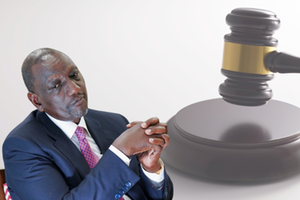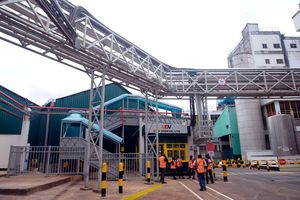Premium
Education lessons from Finland, the world’s happiest country

Ms Anita Lehikoinen (second left), the permanent secretary in Finland’s Ministry of Education and Culture with foreign journalists at the ministry headquarters in Helsinki.
Finland is an alluring country, with over 188,000 lakes and a forest cover of about 75 per cent.
Since 2018, it has been ranked the happiest country in the world by the UN World Happiness Report. In the latest happiness ranking, Kenya is 119 out of the 146 countries.
Countries are ranked based on factors such as their Gross Domestic Product per capita, social support, healthy life expectancy, freedom to make life choices, generosity as well as perceptions of corruption.
Two weeks ago when Deputy President Rigathi Gachagua inaugurated the Presidential Working Party on Education Reforms (PWPER) in Nairobi, this writer had a briefing with Ms Anita Lehikoinen, the permanent secretary in the Finland Ministry of Education and Culture. I was part of 10 foreign education journalists who had been invited to Finland’s capital Helsinki, for a familiarisation visit of the Finnish education system, regarded as one of the best in the world.
Finland is one of the countries Kenyan curriculum developers benchmarked with when developing the competency-based curriculum (CBC) whose implementation so far has been far from smooth.
Like Kenya, Finland does not have a long history of industrialisation and only attained independence from Sweden in 1917. It is after World War II that the country heavily invested in the education of its population to spur economic growth. It does not have oil and gas like other Nordic countries and therefore has invested heavily in the education of its people.
There are striking similarities between CBC and the Finnish education system in terms of structure and goals but whereas the Finns have implemented theirs quite well, our implementation has been chaotic.
In Finland, education is free, in every sense, for all citizens up to higher education. There is no tuition fees or levies of any kind. In basic education, school lunch is free to all as are books and transport for those who need it.
In upper secondary school, lunch is also free and parents only spend money on books. In higher education, they also buy books and meals are heavily subsidised.
As debate rages in Kenya over whether to abolish or retain boarding schools, all schools are day in Finland. Finns so highly trust their public education that more than 95 per cent of learners attend public schools.
“You get the same quality in public schools. We keep the quality the same all over the country,” Ms Lehikoinen explained.
She added that the Finnish education system is anchored on the trust the pubic bestows upon the teachers. There are no standardised national exams in basic education. The only such test is a matriculation exam before joining university or tertiary education.
The trust in teachers is so high that they set, mark and grade the assessments and the public accepts their verdict.
This differs sharply from the Kenyan situation where the abolition of exams under CBC has become a sticky issue with some being apprehensive that teachers will do an honest job.
The minimum qualification to teach at any level in Finland is a master’s degree and teacher education is given top priority. They undergo three years of either a bachelor of science or arts degree to master the content and then two years master’s on pedagogy.
A primary school teacher teaches Grades 1 to 6 in all the 13 subjects in the curriculum. The age of the students is between 7 and 13. Secondary school teachers typically teach one major subject and a minor at Grades 7 to 12 (ages 13 to 19). Teachers have pedagogical autonomy and decide the methods of teaching as well as the textbooks and materials to use.
At the centre of the Finnish education success story is food. Provision of free meals from kindergarten started in the early 1940s.
“It’s a learning experience and part of the curriculum. There are so many stories behind school meals. It’s a shared narrative that binds us,” said Prof Hille Janhonen-Abruquah, a professor of Home Economics Pedagogy at the University of Helsinki.
“Nothing destroys potential like hunger,” the minister for Development Cooperation and Foreign Trade told journalists.





